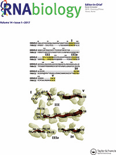
RNA Biology
Scope & Guideline
Exploring the Frontiers of RNA Research
Introduction
Aims and Scopes
- RNA Modification and Editing:
The journal highlights studies on various RNA modifications (such as m6A, 5' capping, and uridylation) and their implications in gene expression, cellular processes, and disease. - RNA Structure and Function:
Research examining the structural aspects of RNA, including its secondary and tertiary structures, and how these structures influence RNA function, stability, and interactions with proteins. - Non-Coding RNAs:
A significant focus on the roles of non-coding RNAs (ncRNAs), including long non-coding RNAs (lncRNAs), microRNAs (miRNAs), and circular RNAs (circRNAs), in regulating gene expression and their implications in diseases. - RNA-Protein Interactions:
Investigations into the interactions between RNA and RNA-binding proteins (RBPs), elucidating their regulatory roles in RNA metabolism, stability, translation, and splicing. - Transcription and Translation Regulation:
Studies that explore the mechanisms of transcription and translation, including RNA polymerase dynamics, ribosome function, and the impact of RNA modifications on these processes. - RNA in Disease and Therapeutics:
Research focusing on the implications of RNA biology in various diseases, including cancer and viral infections, as well as the development of RNA-based therapeutics.
Trending and Emerging
- Epitranscriptomics:
There is a growing interest in the study of RNA modifications and their roles in regulating gene expression and cellular functions, particularly the m6A modification and its impact on various biological processes. - Circular RNAs:
Research on circular RNAs has surged, focusing on their biogenesis, functions, and roles in diseases, as well as their potential as biomarkers and therapeutic targets. - Machine Learning and Computational Approaches:
The use of machine learning and computational methods to analyze RNA sequences and predict RNA interactions and modifications is becoming increasingly prominent, facilitating novel insights into RNA biology. - RNA Nanotechnology:
Emerging studies on RNA nanostructures and their applications in drug delivery and imaging are gaining traction, reflecting a trend towards integrating RNA biology with nanotechnology. - RNA in Disease Mechanisms:
There is an increasing focus on understanding the role of RNA in various disease mechanisms, particularly in cancer and viral infections, leading to the development of RNA-based diagnostics and therapeutics.
Declining or Waning
- Traditional RNA Biology:
Themes related to classical RNA biology, such as basic transcription and translation processes, appear to be waning as the field shifts towards more complex regulatory mechanisms and RNA modifications. - Basic RNA Structure Studies:
Research exclusively focused on the fundamental structures of RNA without exploring their functional implications is becoming less frequent as studies increasingly emphasize RNA's role in regulation and interaction. - Early-stage RNA Therapeutics:
Initial explorations of RNA-based therapeutics are declining, possibly due to a maturation of the field towards more advanced and specific applications, such as targeted RNA editing and advanced delivery systems.
Similar Journals

Molecular Cell
Advancing the Frontiers of Cell and Molecular Science.Molecular Cell, published by Cell Press, is a leading journal in the fields of cell biology and molecular biology. Established in 1997, this prestigious journal boasts a significant impact within the scientific community, evidenced by its impressive 2023 Scopus rankings, placing it in the top 2% of its field (Rank #10/410 in Molecular Biology, Rank #12/285 in Cell Biology). With a focus on cutting-edge research that bridges the gap between molecular genetics and cellular function, Molecular Cell serves as an essential platform for the dissemination of vital findings and innovative methodologies. Although it follows a traditional publishing model without Open Access options, its rigorous peer-review process and high standards ensure that articles published within these pages are of the utmost quality, making it an invaluable resource for researchers, professionals, and students alike seeking to stay at the forefront of scientific discovery. The journal's address is 50 Hampshire St, Floor 5, Cambridge, MA 02139, United States, reinforcing its commitment to fostering scientific excellence and collaboration.
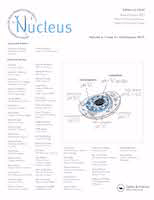
Nucleus
Empowering researchers through open access to cutting-edge discoveries.Nucleus is a distinguished academic journal published by Taylor & Francis Inc, dedicated to advancing the fields of Cell Biology and Medicine. Since its inception, the journal has gained significant recognition, achieving a Q1 ranking in both Cell Biology and Medicine (miscellaneous) categories in 2023. With a focus on innovative research that intersects molecular biology and genetics, Nucleus serves as a vital platform for researchers and professionals aiming to disseminate findings that contribute to our understanding of cellular mechanisms and their implications in health and disease. The journal's commitment to Open Access since 2018 ensures that cutting-edge research is readily available to the global community, fostering collaboration and engagement across disciplines. Located in Philadelphia, PA, Nucleus not only aims to publish high-quality articles but also aspires to influence future research directions in the biological sciences, making it an essential resource for anyone involved in the life sciences.

NUCLEOSIDES NUCLEOTIDES & NUCLEIC ACIDS
Unlocking the Secrets of Nucleic AcidsNUCLEOSIDES NUCLEOTIDES & NUCLEIC ACIDS is a vital academic journal published by Taylor & Francis Inc, dedicated to the intricate and evolving domains of biochemistry, genetics, and molecular medicine. With an ISSN of 1525-7770 and E-ISSN of 1532-2335, this journal aims to provide a comprehensive platform for the dissemination of research findings, reviews, and methodologies related to nucleosides, nucleotides, and nucleic acids. As a research journal thriving since its inception in 2000, it reflects a diverse spectrum of studies crucial for advancing knowledge in biochemistry (ranked Q4) and genetics (Q4), while also achieving Q3 status in medicine (miscellaneous). Despite its current standing in the quartiles and Scopus rankings indicative of an emergent trajectory, the journal retains significant relevance for those delving into interdisciplinary research that intersects these fields. Researchers, professionals, and students alike can explore a plethora of original research articles, thought-provoking reviews, and updates on pioneering advances that shape our understanding of molecular biology. With its unwavering commitment to scholarly excellence, NUCLEOSIDES NUCLEOTIDES & NUCLEIC ACIDS continues to be an essential resource for those aiming to contribute to and stay informed about this pivotal area of scientific inquiry.

MOLECULAR BIOLOGY
Unlocking the Secrets of Life at the Molecular LevelMOLECULAR BIOLOGY, published by PLEIADES PUBLISHING INC, serves as a vital repository for the dissemination of innovative research within the fields of biochemistry, genetics, and molecular biology. With an ISSN of 0026-8933 and an E-ISSN of 1608-3245, this journal has been a mainstay in the scientific community since its inception, embracing its deep historical roots from 1971 to the present. Recognized for its qualitative contributions, MOLECULAR BIOLOGY is ranked in the Q3 quartile for Biophysics and Q4 for Structural Biology, placing it among select journals in its domain. Researchers and students alike benefit from its rigorous peer-reviewed articles, which focus on all aspects of molecular mechanisms and interactions. The journal's inclusion in prestigious databases underlines its commitment to academic excellence. The editorial board is dedicated to fostering the sharing of influential findings, making it an essential resource for advancing knowledge and innovation in molecular biology.
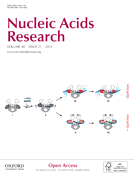
NUCLEIC ACIDS RESEARCH
Illuminating the Pathways of Nucleic AcidsNUCLEIC ACIDS RESEARCH, published by Oxford University Press, is a premier peer-reviewed journal in the field of genetics, holding a prestigious Q1 ranking in this domain as of 2023. Since its inception in 1974 and with a converged publication horizon extending to 2024, this journal has established itself as a vital resource for researchers and professionals interested in the molecular aspects of nucleic acids, encompassing DNA and RNA studies as well as their implications in biochemistry and molecular biology. With an impressive Scopus rank of #6 out of 347 in Genetics, this journal is positioned in the 98th percentile among its peers, highlighting its significant impact and relevance in the scientific community. As an open access journal since 2005, NUCLEIC ACIDS RESEARCH ensures wide dissemination of knowledge, promoting collaborative advancements in genetic research. For those looking to stay at the forefront of nucleic acid research, this journal remains an essential publication for accessing cutting-edge findings and innovative methodologies in the field.
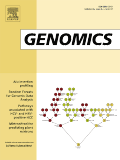
GENOMICS
Advancing Genetic Frontiers with PrecisionGENOMICS is a prestigious journal published by Academic Press Inc Elsevier Science, dedicated to advancing the field of genetic research and molecular biology. With an impressive impact factor, this journal is recognized for its rigorous peer-review process and high-quality publications that cover a wide range of topics within the genomics discipline. Operating from the United States, GENOMICS has established itself as a vital resource for researchers, professionals, and students alike, standing at Q2 in the Genetics category according to the latest rankings. With a rich history dating back to 1987 and convergence extending to 2024, the journal highlights cutting-edge discoveries and methodologies, ensuring that its readership remains at the forefront of genetic advancements. Although currently not an open-access journal, articles published within its pages are often accessible through various academic platforms, enhancing worldwide reach and dissemination. For those engaged in the fields of biochemistry, genetics, and molecular biology, GENOMICS serves as an indispensable platform for impactful research and collaborative initiatives.
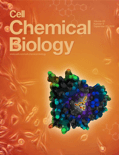
Cell Chemical Biology
Exploring the Intersection of Chemistry and Biology.Cell Chemical Biology, published by Cell Press, stands at the forefront of interdisciplinary research in the realms of biochemistry, molecular biology, and pharmacology. With a robust impact factor evident in its prestigious Q1 quartile rankings across multiple categories including Clinical Biochemistry and Drug Discovery for 2023, this journal serves as a critical platform for disseminating cutting-edge scientific discoveries. As an Open Access publication, it ensures that vital research is accessible to a wide audience, fostering collaborations and driving innovation in the life sciences. Based in the United States, and featuring publications from 2016 to 2024, Cell Chemical Biology invites researchers, professionals, and students alike to contribute to its mission of advancing knowledge through rigorous peer-reviewed articles that address both fundamental and applied aspects of chemical biology.
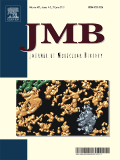
JOURNAL OF MOLECULAR BIOLOGY
Advancing the Frontiers of Molecular DiscoveryThe Journal of Molecular Biology (ISSN: 0022-2836, E-ISSN: 1089-8638), published by Academic Press Ltd - Elsevier Science Ltd, stands as a premier platform for disseminating significant advancements in the field of molecular biology. With a distinguished history of publication spanning from 1959 to 2024, this journal is recognized for its high-quality, peer-reviewed articles that engage with transformative research in biophysics, structural biology, and molecular biology. The journal holds an impressive Q1 category ranking across these disciplines in 2023, affirming its impact and relevance within the scientific community. Notably, it ranks #11 in biophysics and #5 in structural biology based on Scopus metrics, placing it in the 93rd and 90th percentiles, respectively. As an essential resource for researchers, professionals, and students alike, the Journal of Molecular Biology serves as a vital conduit for the exchange of innovative ideas and discoveries, fostering a deeper understanding of life's molecular underpinnings.

Biochimica et Biophysica Acta-Gene Regulatory Mechanisms
Deciphering the Language of Life at the Molecular LevelBiochimica et Biophysica Acta-Gene Regulatory Mechanisms, published by Elsevier, stands as a premier academic journal within the realms of biochemistry, biophysics, genetics, and molecular biology. With an impressive Q1 category ranking across several disciplines and a commendable Scopus percentile ranking of 89th in its field, the journal is a significant contributor to the scientific community, promoting groundbreaking research and discoveries from 2008 to 2024. Although it does not currently operate under an open access model, researchers accessing this journal will find in-depth articles that advance understanding of gene regulatory mechanisms and their implications for health and disease. The journal's location in the Netherlands enriches its global perspective, attracting a diverse range of submissions that reflect the cutting edge of science today. By publishing high-quality, peer-reviewed research, Biochimica et Biophysica Acta-Gene Regulatory Mechanisms continues to foster knowledge and innovation, making it an essential resource for researchers, professionals, and students alike seeking to delve deeper into the molecular underpinnings of life.

Non-Coding RNA
Leading the Charge in Non-Coding RNA InsightsNon-Coding RNA is a prestigious open-access journal published by MDPI, based in Switzerland, dedicated to the significant and rapidly evolving field of non-coding RNA research. Established in 2015, this journal has quickly become an essential resource for researchers and professionals, showcasing innovative studies and breakthroughs related to the functions and mechanisms of non-coding RNAs in various biological processes. With an impressive Q1 ranking in Biochemistry and strong rankings in Genetics and Molecular Biology, Non-Coding RNA consistently reflects the highest standards of academic publishing. The journal provides comprehensive access options, granting researchers worldwide the ability to disseminate and access high-quality research without subscription barriers. As the landscape of genomics and molecular discoveries continues to expand, the journal aims to foster interdisciplinary exchanges and collaborations, making it a vital platform for advancing knowledge and innovation in this critical area of biological science.